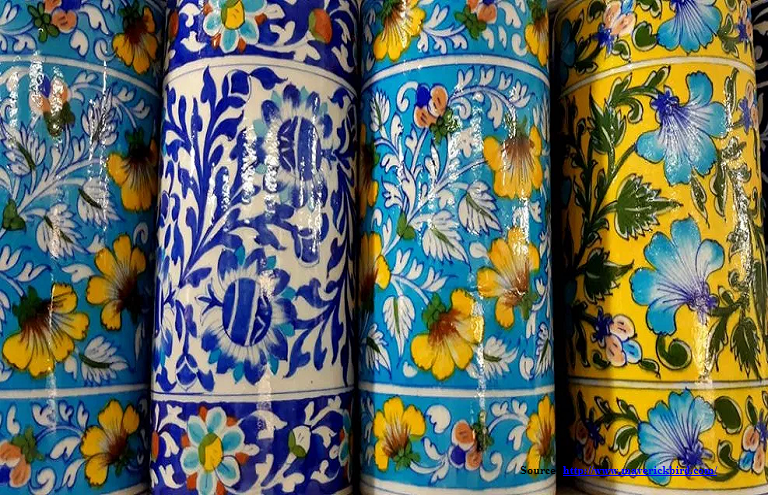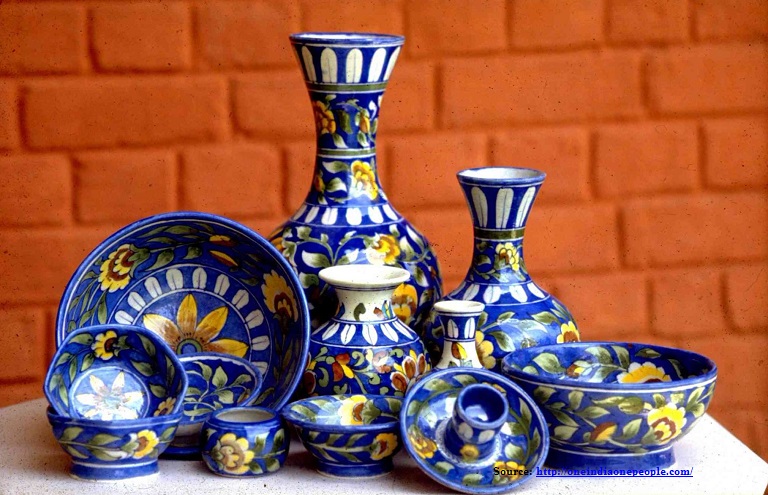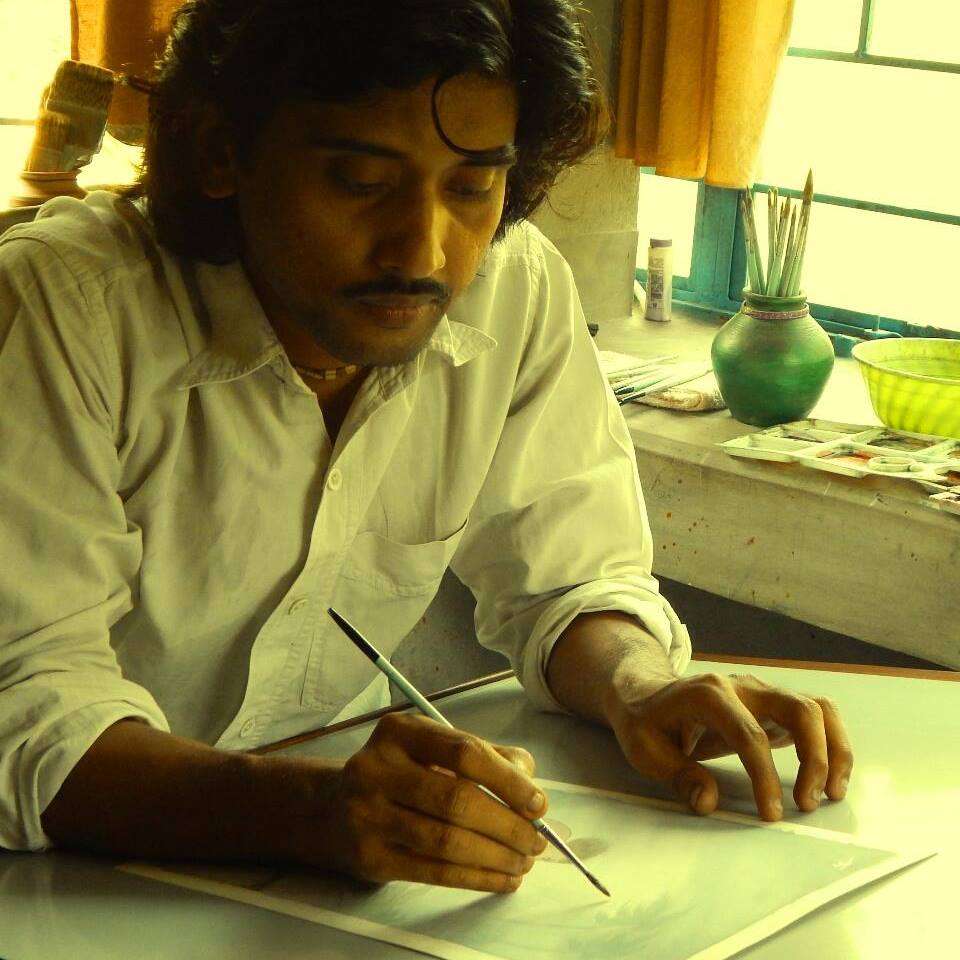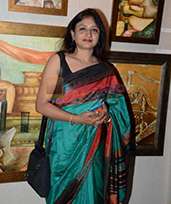
Characterized by a vivid blue, serene white and turquoise colour palette, a semi-transparent decorative item of Jaipur’s blue pottery is a thing of sheer beauty! Having a Turko-Persian origin, and dominated by ornamental vines flowing with symmetry and balance, this elegantly simple product is a timeless traditional Indian craft which speaks volume about the country’s rich heritage.
What distinguishes Jaipur’s blue mystic from all other forms of pottery is the use of a special Egyptian paste comprising quartz. It is the only pottery in the world that isn't made of clay. Glazed and low-fired, these eye-catching pieces are extremely fragile and find a place in almost every pottery aficionado’s household.
Let’s explore this exquisite Indian craft from the very beginning:
-
The Journey of Blue pottery
Blue pottery craft originated in central Asia in the 14th century when Mongol craftsmen fused the Chinese glazing technique with the decorative art form of Persia. It is believed that this technique of art reached the Indian subcontinent with conquests by Turkic rulers in the early 14th century. During its infancy, this foreign technique was primarily used to make glazed tiles to bedeck mosques, tombs, temples, and palaces across the Central Asian region. Later, the Mughals began using them and worked towards developing this art form. Gradually, it grew beyond an architectural accessory and became a part of Indian pottery. From there, the technique of blue pottery traveled to the plains of Delhi and finally reached the city of Jaipur in the 17th century.
Other accounts of the craft state that the technique of blue pottery came to Jaipur in the early 19th century under Maharaja Sawai Ram Singh II(1835 – 1880). The Jaipur king had sent local artisans to Delhi to be trained in this Indian craft. Some specimens of older ceramic work can be seen in the famous Rambagh Palace of Jaipur, where the fountains are lined with vibrant blue tiles. Surviving many upheavals, this famed blue pottery had almost vanished from Jaipur by the 1950s. It was revived by the efforts of renowned artist Kripal Singh Shekhawat and support of the patrons such as Rajmata Gayatri Devi of Jaipur, and Kamala Devi Chattopadhyay, distinguished freedom fighter and social reformer.
-
The Making of Blue Pottery
Completely handcrafted, the blue pottery has a tedious and time-consuming process requiring lots of effort and patience. Unlike most pottery, it is not made of clay but crafted from a special dough.
The dough is made from quartz powder, powdered scrap glass, fuller's earth (Multani mitti), borax, gum (usually katira gond powder ) and water. Some artisans also add saaji or soda bicarbonate to the dough. The ingredients are roughly 1 part each of gum, borax, and fullers earth, 7 parts powdered glass, and 40 parts quartz. Once mixed properly with water, it is left overnight and kneaded together into a uniform consistency the next day and later, again left for 2–3 days before use.
Next, the dough is flattened and pressed into a mould filling it with ash (raakh or burnt wood). Scraping any extra dough, it is pressed gently to take the desired shape. It is then removed from the mould by turning it upside down and then it is left for one to two days to dry. Once dried, the pieces are smoothed with a semi-liquid mixture of dough and water and also to fill any holes on the surface that may have been caused by the ash placed in the mould.
As the dough of blue pottery lacks plasticity, it can be hard-pressed on the potter's wheel to make larger objects and can only be cast into the moulds of varied shapes and sizes. Hence, to make large-sized products such as vases, different moulds are used wherein the parts are joined together using dough and smoothened.
The next step involves hand-painting the dry pottery products with oxide colours. Traditionally, artisans used to make their own brushes using hair from a squirrel’s tail, however, now the painting is done using the regular brushes available in the market.

As the pieces cannot be reworked, the design on the objects is carried out meticulously by the artists using the oxides, which change into bright hues after the objects are baked — cobalt oxide turns to deep blue colour, chromium oxide becomes green, cadmium a bright yellow, manganese creates purple, copper oxides changes to turquoise while iron oxide results in reddish-brown colour. Firstly, a sketch of the design is done in pencil on the clay’s surface, then outlined with cobalt oxide, and finally filled in with other metal oxides. The motifs in Jaipur’s pottery bear a strong resemblance to Persian arts from which it is evolved— intricate floral patterns or geometric designs are quite common, animals such as elephants, camels, and peacocks are also recurring images.
The finished piece is later dipped into a glaze made of powdered glass, borax, zinc oxide, potassium nitrate, and boric acid. A batch of sun-dried pottery is fired at high temperatures (800-1000°Celsius) for almost six hours in a closed clay and wood or charcoal fuelled kiln. Finally, it is left to cool for three days and the mesmerizing piece of blue pottery is ready.

Traditional craftsmen consider their art as sacred and follow certain rituals while making these products. When the dried pottery products are ready to be fired (bhatti paka), a puja ceremony is performed wherein prasad is distributed every time the products are put into and taken out from the brick kiln.
-
The Products
Once used to decorate palaces, mosques, tombs, and temples in the past, this famed Indian craft is available in a vast range of products combining elegance, beauty, and functionality.
Products like pickle containers (achardanis), imperial bowls, egg cups, beer mugs, plates, and other crockery items can make a colourful addition to any kitchen. Accessories, pots, expression, and colourful tiles with interesting quotes or cartoons, doorknobs, vases, iron hooks for walls, ashtrays, coasters, cardholders, napkin rings, and candle stands make for an interesting decor. Iron trivets, jewelry sets, beads, and keychains are also available. The price of these glazed pottery items are also quite reasonable and range from Rs100 to Rs20,000.
Though it is mostly done in vivid blue colour, artists have experimented a lot and now the items are also available in the vibrant shades of yellow, green, and light blue.
Blue pottery uses natural raw materials, which makes it environment friendly. Also, it doesn't require any special maintenance and can be easily cleaned with water.
Undoubtedly, these historical and vibrant blue pottery items are one of the most sought after souvenirs of the Pink City.
-
The Comeback
Though widely recognized, this traditional Indian craft had a temporary lull and almost vanished in the 1950s. It was revived by the efforts of the famous craftsman, painter, and ceramist of India, Kripal Singh Shekhawat, who worked relentlessly to encourage this craft. After studying painting at the famous art school of Rabindranath Tagore in West Bengal, Shanti Niketan, he pursued a diploma in Oriental Arts from Tokyo University. Later, he taught traditional Indian painting and blue pottery in the Sawai Ram Singh Shilpa Kala Mandir in Jaipur.
He was conferred the Padma Shri in 1974 for his significant contribution in the field of art and craft and later honored with the title ‘Shipla Guru’ by the Government of India in 2002. He founded ‘Kripal Kumbh’ in the late 1960s to keep this traditional art form alive and manufacture authentic blue pottery. After his death in 2008, Kripal Kumbh was run by his wife Sajjan Kanwar and daughters Himani, Meenakshi, and Kumud. Today, both classical and new designs of blue pottery are manufactured at Kripal Kumbh.
Also, the efforts of social worker Leela Bordia gave a new lease of life to this dying tradition of Jaipur. As a child, she used to accompany her mother in her work with Mother Teresa in Kolkata. Following her mother’s footsteps, she got involved with social work in Jaipur after her marriage. On one such visit to a slum in the city, she found some potters crafting blue pottery work.This accidental meeting with those artisans introduced her to this traditional craft.
“I never chose Blue Pottery, it chose me.” — Leela Bordia
She started working out ways to market these products more widely so as to improve the standard of living of villagers. On her travels to other countries, she found out that decorative products have a limited market and a blend of beauty and utility is required to create the demand for these pottery items. She started guiding artisans on designs and later founded Neerja International Inc in Jaipur in 1978. It is one of the leading manufacturers and exporters of blue pottery in India. Other manufacturers of this traditional craft include the Jaipur Blue Pottery Art Centre and the Jaipur Blue Pottery Doraya family shop.
Still, there are many challenges including expensive raw materials, labor charges, taxes for the craft to survive. Also, there has been a significant decline in the number of people practicing this craft owing to a growing preference for white-collar jobs, increasing expenses, and low earning potential.
However, efforts to introduce crafts in schools and colleges have been going on, it is likely to survive and develop if few children get interested.
Final Words
Jaipur’s blue pottery has changed a lot in terms of materials used, the designs and shapes. The raw materials used and making processes too have changed over the years. Earlier, the glazed coating used for the pottery consisted of lead but now mostly it is lead-free. Also, in some places, diesel furnaces have replaced the traditional kilns fueled by wood or charcoal. There is a rise in the use of fabric or abstract designs instead of traditional floral and geometric patterns.
In spite of these upheavals and the changes, the historical, vibrant-blue, glazed pottery tradition of Jaipur remains as striking as ever!





















